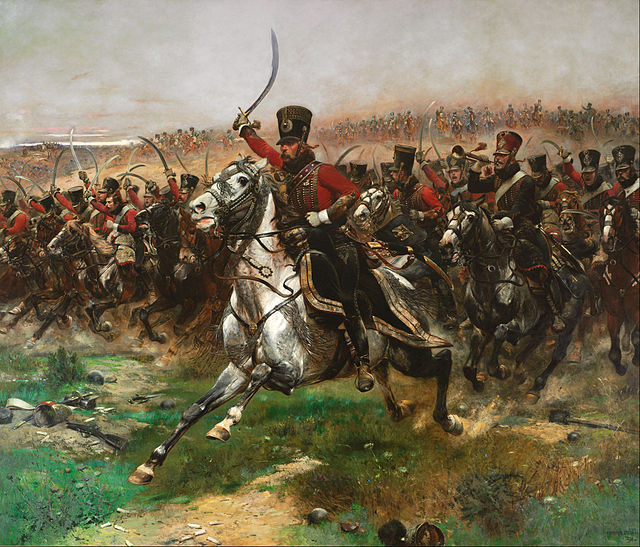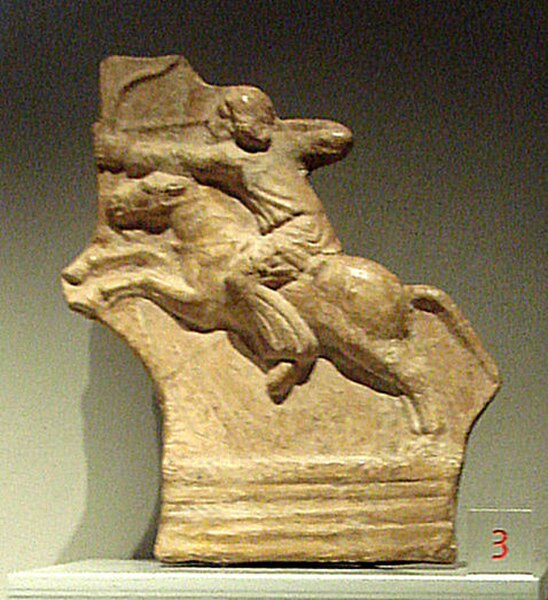For much of history, humans have used some form of cavalry for war and, as a result, cavalry tactics have evolved over time. Tactically, the main advantages of cavalry over infantry were greater mobility, a larger impact, and a higher riding position.
Charge of the French 4th Hussars at the Battle of Friedland, 14 June 1807, during the Napoleonic Wars
A 13th-century Mongol saddle cover
Battle of La Higueruela (1431) between John II of Castile and Muhammed IX, Nasrid Sultan of Granada
Polish hussar formation at the Battle of Klushino 1610 – painting by Szymon Boguszowicz 1620
Historically, cavalry are soldiers or warriors who fight mounted on horseback. Until the 20th century cavalry were the most mobile of the combat arms, operating as light cavalry in the roles of reconnaissance, screening, and skirmishing in many armies, or as heavy cavalry for decisive shock attacks in other armies. An individual soldier in the cavalry is known by a number of designations depending on era and tactics, such as a cavalryman, horseman, trooper, cataphract, knight, drabant, hussar, uhlan, mamluk, cuirassier, lancer, dragoon, or horse archer. The designation of cavalry was not usually given to any military forces that used other animals for mounts, such as camels or elephants. Infantry who moved on horseback, but dismounted to fight on foot, were known in the early 17th to the early 18th century as dragoons, a class of mounted infantry which in most armies later evolved into standard cavalry while retaining their historic designation.

French 4th Hussars at the Battle of Friedland, 1807
Assyrian cavalry
Parthian horseman, now on display at the Palazzo Madama, Turin
Warrior's departure; an Athenian amphora dated 550–540 BC








